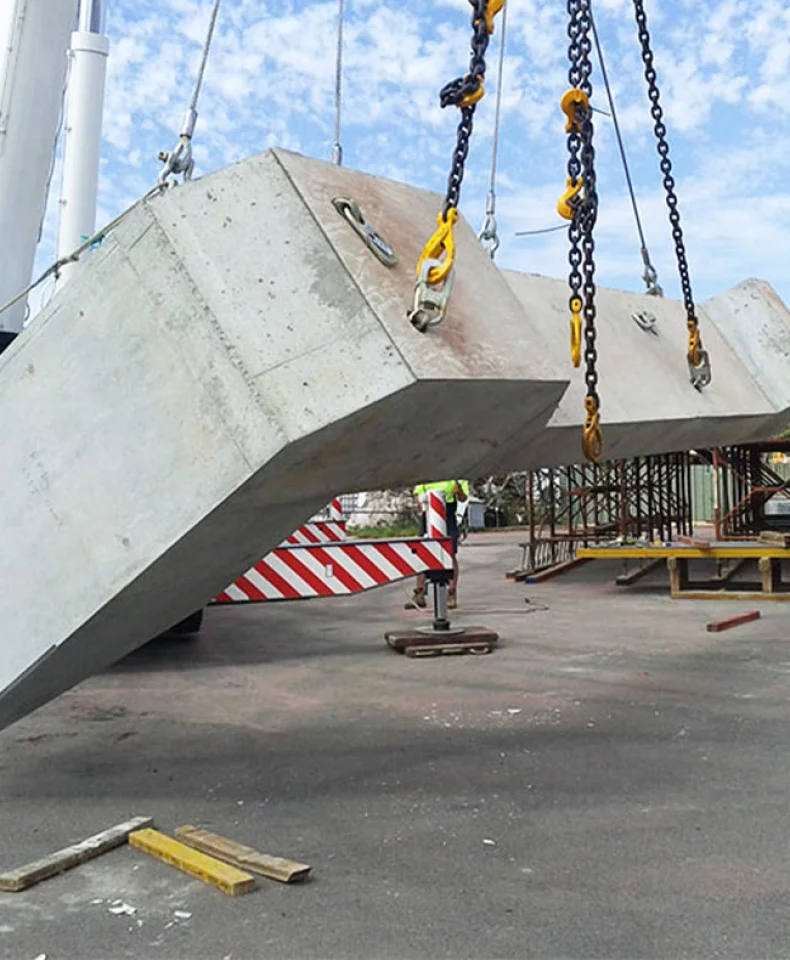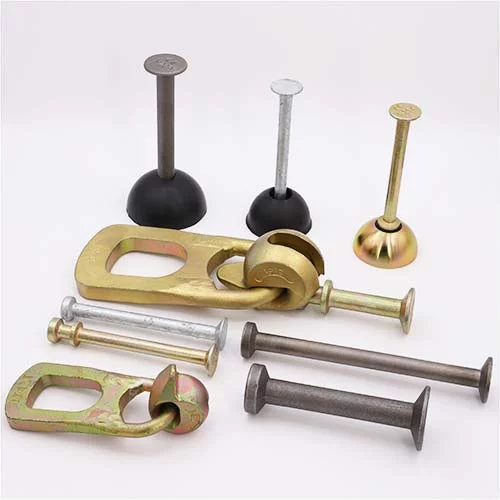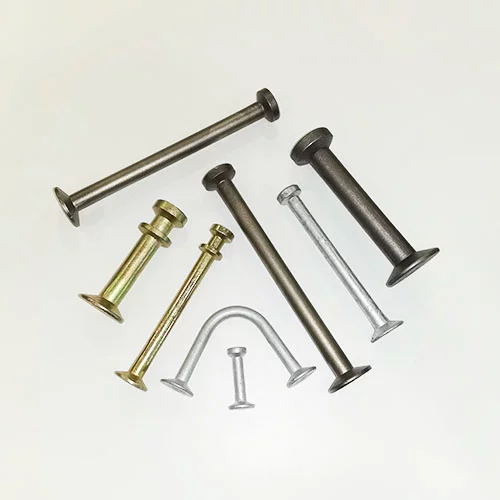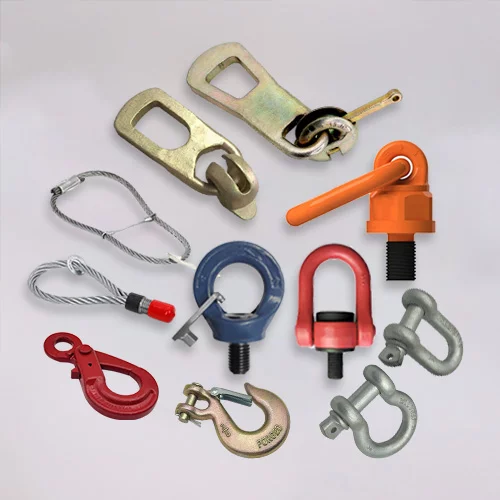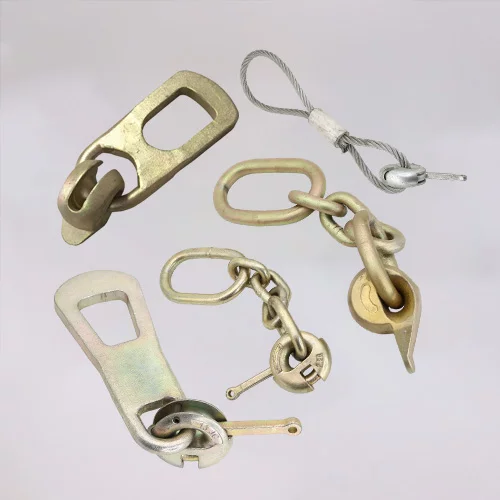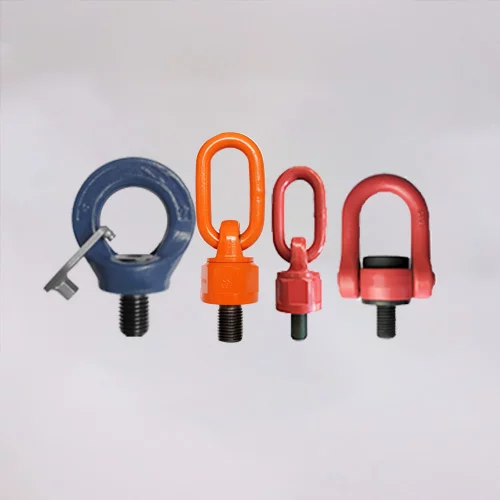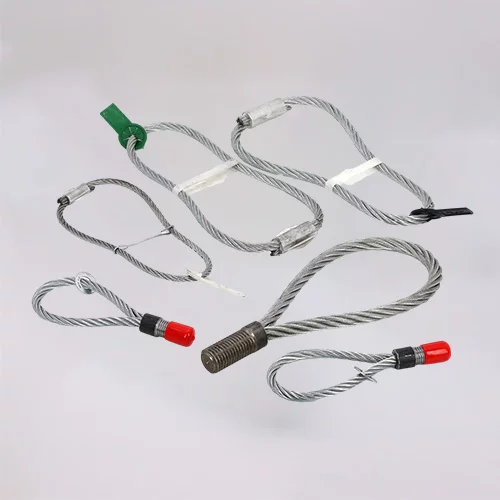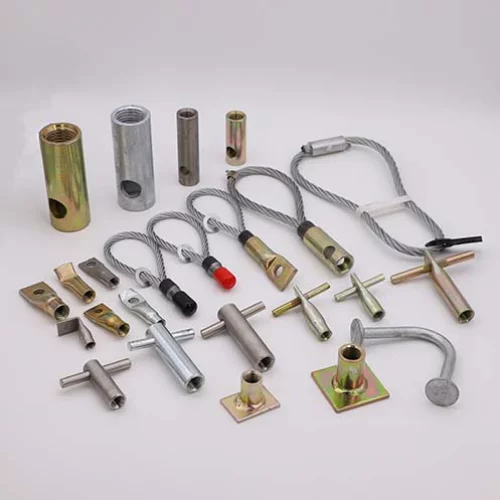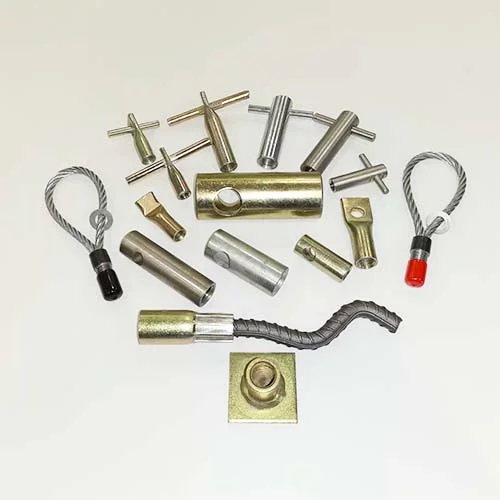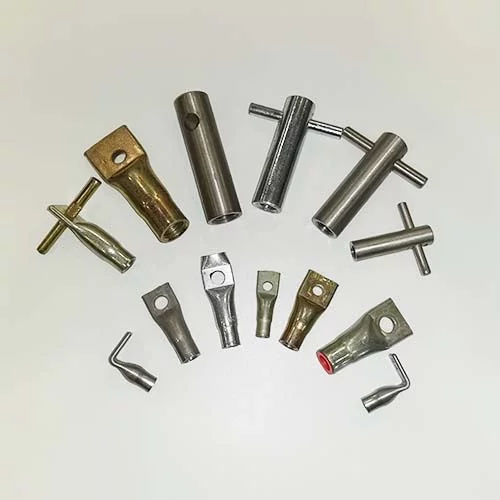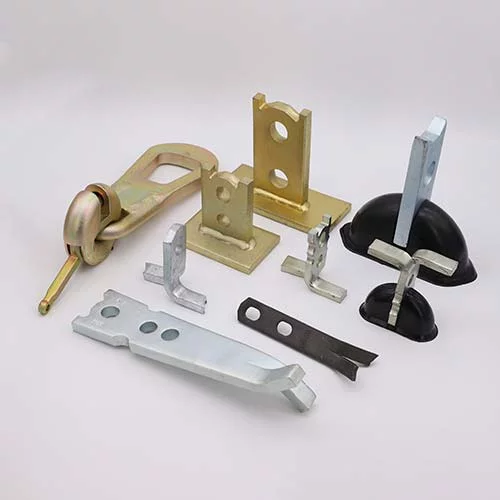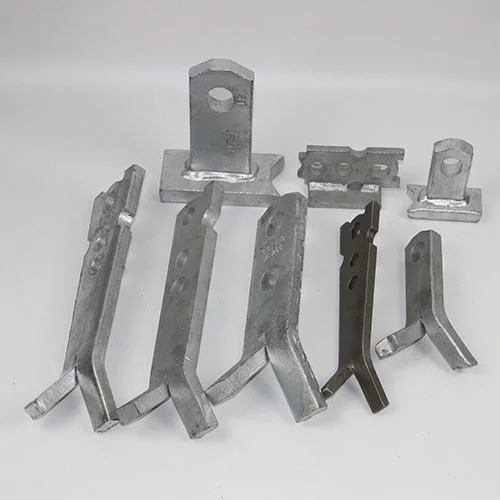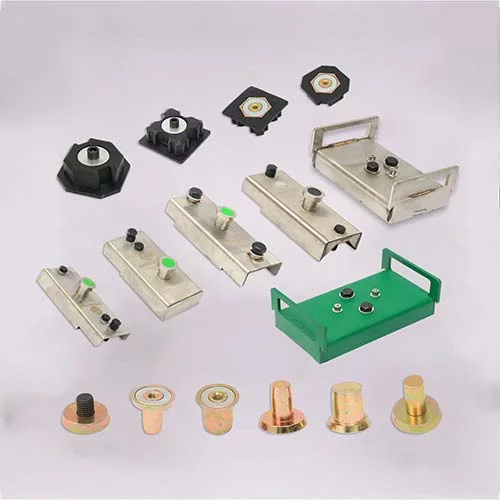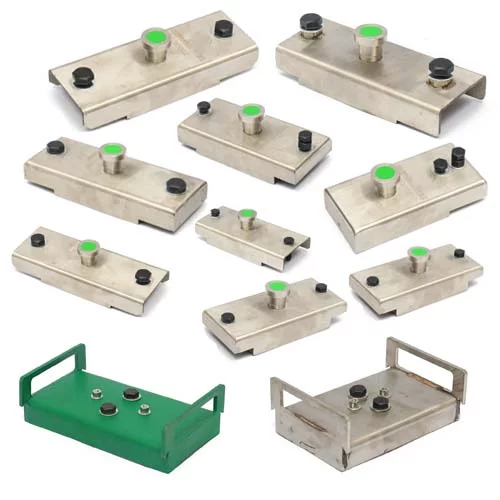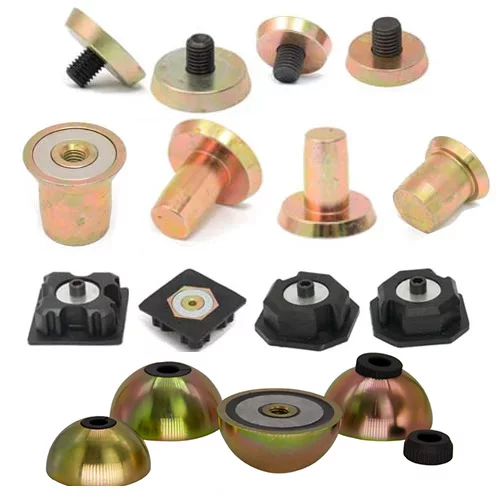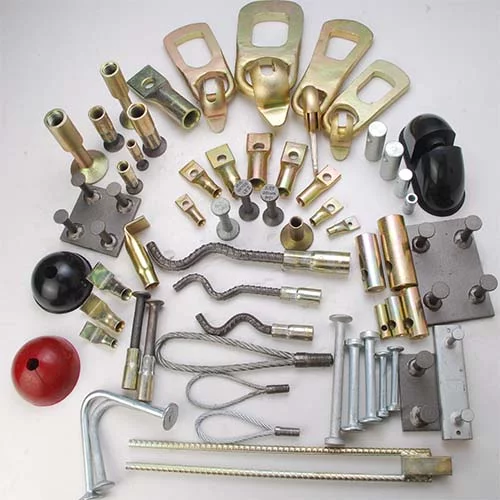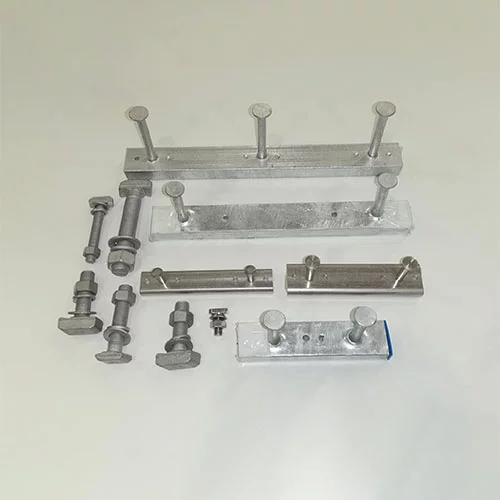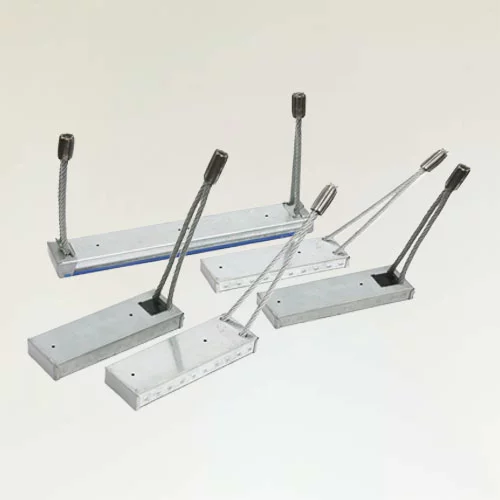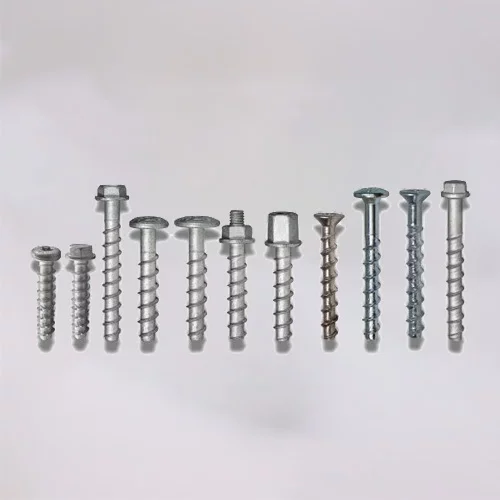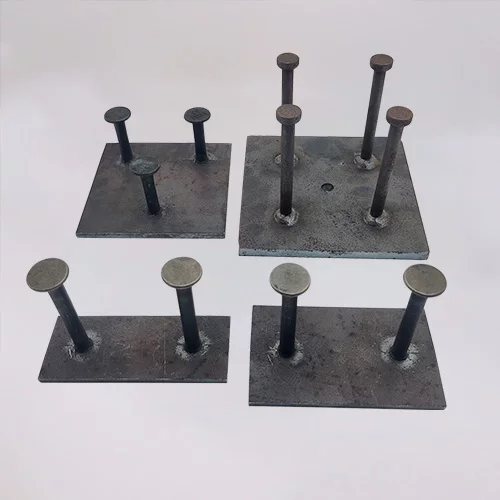Cast-In Loops vs. Lifting Loops: The Guide to Choosing the Right Lifting loops for Precast Concrete Projects

Understanding Cast-In Loops
Definition and Function
Cast-in loops—also known as embedded loops or anchor eyes—are permanent steel loops integrated into the rebar cage before concrete placement. Once the concrete cures, these loops become an inseparable part of the structure, providing robust, dependable pick-up and tie-down points. Their design ensures that lifting forces transfer directly from the loop into the surrounding concrete and reinforcing steel, leveraging the full strength of the assembly.
Materials and Construction
Steel Grades: Most cast-in loops are fabricated from high-strength stainless steel or galvanized rebar conforming to standards such as ASTM A615/A706. Stainless grades (e.g., 304, 316) offer superior corrosion resistance, ideal for harsh environments.
Composite Options: Advanced designs use inner sleeves made from fiberglass or high-density polyethylene (HDPE), providing electrical and thermal insulation for specialty applications (e.g., electrical vaults, thermal bridges).
Protective Sleeves & Coatings: Loops may feature plastic or metal sleeves that prevent concrete contamination during pouring and improve corrosion resistance. Powder-coating or galvanizing further extends service life in chemically aggressive or coastal conditions.
Installation Process
Layout & Coordination: Engineers plan loop locations based on structural load paths, crane reach, and handling strategy.
Rebar Cage Integration: Loops attach securely to the main reinforcement cage using tie wire or mechanical couplers. Positioning must be precise, as once concrete is placed, adjustments are impossible.
Concrete Pour & Curing: As concrete fills the form, it encapsulates the loops. Proper vibration ensures no voids around the loops, maximizing bond strength.
Quality Verification: After curing, non-destructive testing (e.g., pull-out tests) or visual inspection confirms correct embedment and alignment.
Advantages of Cast-In Loops
Exceptional Load Capacity: Typical working loads range from 10,000 to over 100,000 lbs, depending on loop size and steel grade. Independent tests often reveal safety factors of 5:1 to 7:1, offering confidence under extreme conditions.
Permanent Positioning: Once set, loops remain exactly where designed, ensuring attachments occur at planned locations without secondary drilling or drilling-induced micro cracks.
Durable & Maintenance Free: High-quality steel and protective sleeves endure decades of exposure to moisture, chemicals, UV radiation, and freeze-thaw cycles without degrading.
Resistance to Dynamic Forces: Embedded within the rebar lattice, cast-in loops dissipate shock, vibration, and seismic energy into the concrete mass, keeping connections intact even under harsh movement.
Lifecycle Cost Efficiency: Although initial costs can be higher, the elimination of replacement anchors, drilling, and repairs yields lower long-term expenses.
Applications of Cast-In Loops
Bridges & Flyovers: Securing guardrails, light poles, and signage modules that demand absolute reliability.
High-Rise Buildings: Lifting and connecting precast façade panels and floor slabs that require pinpoint accuracy.
Hydraulic Structures: Dams and spillways use cast-in loops to fasten gates, piping, and heavy mechanical assemblies.
Marine & Coastal Installations: Seawalls, quay walls, and offshore platforms benefit from corrosion-resistant embedded anchors.
Industrial Plants & Power Stations: Attachment points for piping, ductwork, platforms, and safety ladders.
Limitations of Cast-In Loops
Irreversible Positioning: Misplaced loops are virtually impossible to correct without demolishing concrete; stringent planning and quality control are essential.
Higher Upfront Cost: Material, fabrication, and installation costs exceed those of temporary alternatives, though lifecycle savings often justify the investment.
Planning Dependency: Requires early coordination in design and formwork stages, potentially complicating fast-track projects.
Understanding Lifting Loops
Definition and Function
Lifting loops—sometimes called strand loops or crane loops—are temporary steel connectors inserted into dedicated sockets cast into the precast concrete. They facilitate safe handling, positioning, and rotation of elements during transport and erection, and are removed once no longer needed.
Materials and Specifications
Steel Alloys: Commonly manufactured from high-strength carbon steel (e.g., ASTM A529 Grade 50) or chrome molybdenum alloys.
Surface Treatments: Zinc plating, galvanizing, or powder coatings guard against rust during storage and transport.
Dimensional Range: Wire diameters from ¾″ to 2″ yield capacities from a few thousand up to 30,000 lbs per loop. Nylon or polymer sleeves protect concrete socket walls and minimize abrasion.
Installation and Handling
Socket Integration: During casting, sockets with threaded inserts or steel blocks are embedded within the form.
Post Cure Insertion: After concrete reaches design strength, lifting loops slide into sockets and lock via bolts, spring pin mechanisms, or quick release clips.
Load Monitoring: Each loop is marked with a working load limit (WLL) and safety factor. Rig crews verify ratings and inspect sleeves for wear before use.
Removal & Storage: Once panels reach their final location, loops remove easily and return to inventory, ready for the next lift cycle.
Advantages of Lifting Loops
Flexibility & Adjustability: Install loops at optimal pick points to control tilt, rotation, and balance, enhancing site safety.
Quick Installation: No drilling, adhesives, or chemical anchors—riggers can install by hand or with simple tools.
Reusability: Durable steel loops can serve dozens of lifts if properly maintained, reducing per-lift costs.
Lower Initial Investment: Material and production expenses are modest compared to embedded anchors.
Improved Logistics: Stocked off the shelf, lifting loops speed up project timelines by eliminating custom fabrication lead times.
Applications of Lifting Loops
Precast Transportation: Safe rotation and placement of beams, wall panels, and hollow core slabs on trucks and in yards.
On-Site Adjustments: Fine-tune panel alignment before final bolting or grouting.
Formwork Handling: Move heavy form assemblies between pours without permanent anchors.
Temporary Works & Retrofits: Facilitate lifting and installation of repair patches or new precast elements on existing structures.
Limitations of Lifting Loops
Temporary Service Life: Not designed for long-term load bearing—cast-in or similar permanent anchors must be used for final structural connections.
Risk of Dislodgement: Improperly secured loops can back out under vibration or abrupt load shifts; use of bolts or safety clips is mandatory.
Corrosion & Wear: Exposed loops may corrode between uses; regular inspection for pitting, cracks, or sleeve damage is critical.
Socket Maintenance: Sockets require protective plugs to prevent debris and moisture ingress when not in use.
Cast-In Loops vs. Lifting Loops: A Side-by-Side Comparison
Feature | Cast-In Loops | Lifting Loops |
Working Load Capacity | 10,000 – 100,000 lbs (or more) | Up to 35,000 lbs per loop |
Permanence | Lifetime of the concrete structure | Temporary, removed post-lift |
Positioning | Fixed at pour time | Adjustable until locked in the socket |
Installation Timing | During rebar cage assembly | After the concrete cure |
Initial Cost | Higher (design, material, labor) | Lower (standard inventory items) |
Lifecycle Cost | Lower (no replacements/repairs) | Higher if frequent replacements |
Lead Time | Custom fabrication and coordination | Off-the-shelf availability |
Ideal Uses | Permanent structural connections | Handling, rotation, and site adjustments |
Hybrid Anchoring Solutions
Blending cast-in loops and lifting loops can unlock the strengths of both systems—permanent, high-capacity anchors for ultimate structural safety combined with temporary loops for enhanced flexibility during staging and erection.
Supplemental Sockets: Cast additional unused sockets adjacent to the cast-in loops. Riggers can use lifting loops for positioning without risking damage to primary anchors.
Magnetic Assist Systems: Pair permanent magnetic plates embedded near cast-in loops with lifting loops. Magnets prevent lateral slippage during final alignment.
Threaded Inserts: Weld steel studs into the reinforcement cage that protrude through the concrete face. Attach temporary lifting loops or accessories via standard nuts and washers.
Hybrid Snap-Lock Loops: Special loops combine a permanent buried base with a removable top section, allowing quick transitions from lifting to permanent tie-off without additional drilling.
These hybrid approaches enable dynamic site workflows, reduce anchor inventory, and provide contingency pick points if primary loops become obstructed or damaged.
Choosing the Right Anchoring System
Selecting the optimal anchor solution requires careful evaluation of multiple factors:
Load Requirements: Determine maximum static and dynamic loads, factoring in wind, seismic, and handling forces.
Frequency of Lifts: Projects with repeated lifting operations may justify reusable lifting loops; one-off heavy lifts often favor cast-in solutions.
Positioning Precision: If attachments must occur within millimeter tolerances, embedded loops eliminate secondary drilling.
Site Conditions: Harsh marine or chemical environments may demand corrosion-resistant stainless steel and sealed sockets.
Project Timeline: Fast-track schedules benefit from standard lifting loops readily available, while cast-in loops require longer lead times.
Budget Constraints: Balance upfront costs against lifecycle savings—while cast-in loops cost more initially, they avoid future replacements and labor.
Regulatory Compliance: Ensure all anchors meet relevant standards (ASTM, EN, CAN) and project-specific safety regulations.
Engage experienced application engineers early in design. At HULK Metal, our technical team collaborates with contractors and precast fabricators to analyze load cases, site logistics, and installation workflows. We provide detailed anchor selection reports, shop drawings, and on-site guidance to guarantee optimal performance.
Why Choose HULK Metal
With decades of expertise in precast lifting systems, HULK Metal stands out as a one-stop solution provider:
Advanced Manufacturing: State-of-the-art forging, CNC machining, and heat treatment facilities produce high-precision cast-in loops, lifting loops, and hybrid anchors.
Stringent Quality Control: ISO 9001-certified production, in-house load testing labs, and approvals from CE, TUV, and SGS ensure each anchor meets or exceeds safety factors.
Comprehensive Service Team: From design consultation, 3D modeling, and finite element analysis to on-site installation supervision and training, our experts support every project phase.
Global Supply Chain: A network of raw material suppliers, strategic warehouses, and logistics partners guarantees timely delivery to any region.
After Sales Support: Should quality issues arise, HULK Metal offers return, replacement, and technical troubleshooting with rapid response times.
By partnering with HULK Metal, you gain peace of mind knowing your anchoring systems are engineered for reliability, efficiency, and longevity.
Cast in loops and lifting loops each play vital roles in precast concrete construction. Cast-in loops deliver unmatched permanent strength, precision, and durability for critical structural connections. Lifting loops excel in flexibility, rapid deployment, and reusability for handling, positioning, and site adjustments. Combining the two systems through hybrid solutions unlocks greater efficiency and safety throughout the precast lifecycle.
Ultimately, the best choice depends on your project’s specific load demands, schedule, budget, and environmental conditions. Engage trusted experts—like the team at HULK Metal—to analyze your requirements, recommend optimal anchor strategies, and supply high-quality products backed by rigorous testing and reliable support.
Article Navigation
PRECAST CONCRETE ACCESSORIES
Other Precast Concrete Accessories You Might Want to Know
You can click to learn more about HULK Metal precast concrete accessories such as lifting anchors, precast sockets, spread anchors, shuttering magnets, cast-in channels, wire loop boxes, and other precast concrete accessories you might want to know.
